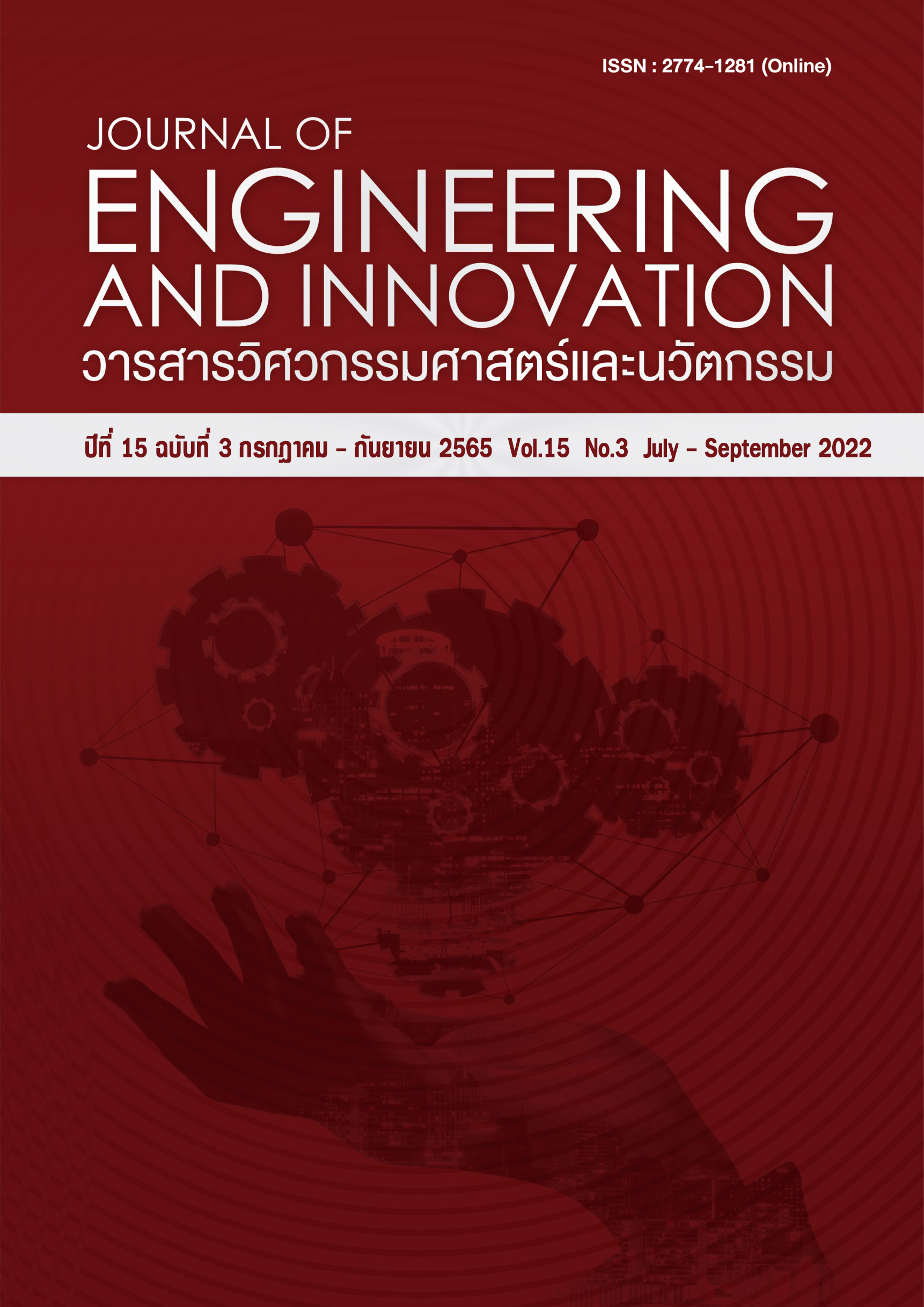Effect of filler metals on creep properties of 2.25Cr-1Mo steel weld joints prepared by TIG process
Main Article Content
Abstract
This research aims at comparing creep properties obtained on welding 2.25Cr-1Mo steel using ER90S-G and ERNiCrMo-3 filler metals by TIG or GTAW process. The samples were preheated at 250 °C for 30 minutes and post-weld heat-treated at 690 °C for 1 hour. The high temperature accelerated creep rupture test of 2.25Cr-1Mo welded samples was investigated over 139 to 315 MPa stress range at temperatures of 550, 600, and 650 °C. The service lifetime of the welded materials can be predicted using the extrapolation of Larson-Miller parameter. Creep surface fracture was investigated using SEM consisted of dimple ruptures and micro-voids coalescence in the fibrous matrix of the intercritical region of HAZ. Similar high-temperature creeps service lives were found in both welded materials.
Article Details
References
Song SH, Wu J, Wei XJ, Kumar D, Liu SJ, Weng LQ. Creep property evaluation of a 2.25Cr–1Mo low alloy steel. Materials Science and Engineering. 2010; 527(9): 2398–2403.
Lima WF, Rigueira G, Furtado HC, Lisboa MB, Almeida LH de, Lima WF, et al. Microstructure evolution and creep properties of 2.25Cr-1Mo ferrite-pearlite and ferrite-bainite steels after exposure to elevated temperatures. Materials Research. 2017; 20(2): 418–422.
Thong-On A, Boonruang C. Design of boiler welding for improvement of lifetime and cost control. Materials. 2016; 9(11): 1–16.
Fernández ARF, Alcântara NG. Analysis of the creep behavior and microstructure of PWHT steam piping exposed to service. Materials Science and Engineering: A. 2004; 371(1): 127–134.
Saga M, Iwasaki S, Tsurusaki Y, Hata S. Repair technologies of mechanical drive steam turbines for catastrophic damage. In Proceedings of the 34th Turbomachinery Symposium. Texas A&M University. Turbomachinery Laboratories; 2005. p. 15–24.
Webster GA, Ainsworth RA. High Temperature Component Life Assessment, first ed. UK: Springer Science & Business Media; 1994.
Shankar V, Rao KBS, Mannan SL. Microstructure and mechanical properties of Inconel 625 superalloy. Journal of nuclear materials. 2001; 288(2): 222–232.
Donachie MJ, Donachie SJ, Superalloys: A Technical Guide, second ed. Materials Park, OH: ASM International; 2002.
Tammasophon N, Homkrajai W, Lothongkum G. Effect of postweld heat treatment on microstructures and hardness of TIG weldment between P22 and P91 steels with Inconel 625 filler metal. Journal of Metals, Materials and Minerals. 2011; 21(1): 93–99.
ASTM E8/E8M-13, Standard Test Methods for Tension Testing of Metallic Materials, West Conshohocken, PA: ASTM International; 2013.
K. Sawada et al. Catalog of NIMS creep data sheets. Science and Technology of Advanced Materials. 2019; 20(1): 1131–1149.
Abe F, Kern TU, Viswanathan R. Creep-Resistant Steels, first ed. Abington, CA: Woodhead Publishing Limited; 2008.
Kassner ME. Fundamentals of Creep in Metals and Alloys, third ed. Waltham, MA: Butterworth-Heinemann; 2015.
Bueno L, Sobrinho J. Correlation between creep and hot tensile behaviour for 2.25Cr-1Mo steel from 500°C to 700°C Part 1: an Assessment According to usual Relations Involving stress, temperature, strain rate and Rupture Time. Matéria (Rio de Janeiro). 2011; 17(3): 1098–1108.
Dieter GE. Mechanical Metallurgy, third ed. US: McGraw-Hill; 1988.
Bueno LO. Creep Behaviour of 2.25 Cr-1Mo steel-An equivalence between hot tensile and creep testing data. In Shibli IA, Holdsworth SR, Merckling G. (eds.) ECCC Creep Conference, 12-14 September 2005, London–Proc. Creep & Fracture in High Temperature Components–Design & Life Assessment Issues. USA: DEStech Publ.; 2005. p. 969-980.
Whittaker MT, Wilshire B. Advanced procedures for long-term creep data prediction for 2.25 chromium steels. Metallurgical and Materials Transactions A. 2013; 44(1): 136–153.
Laha K, Chandravathi K, bhanu sankara rao K, Mannan SL, Sastry DH. A comparison of creep rupture behaviour of 2.25 Cr-1Mo and 9Cr-1Mo steels and their weld joints. High Temperature Materials and Processes. 2000; 19(2): 141-150.
Fujibayashi S, Miura M, Togashi K. Life prediction of low alloy ferritic steels based upon the tertiary creep behavior. ISIJ international. 2004 44(5): 919–926.
Fujibayashi S, Kawano K, Komamura T, Sugimura T. Creep behavior of 2.25 Cr-1Mo steel shield metal arc weldment. ISIJ international. 2004; 44(3): 581–590.
Maruyama K, Abe F, Sato H, Shimojo J, Sekido N, Yoshimi K. On the physical basis of a Larson-Miller constant of 20. International Journal of Pressure Vessels and Piping. 2018; 159: 93–100.
Goyal S, Laha K, Chandravathi KS, Parameswaran P, Mathew MD. Finite element analysis of type IV cracking in 2.25 Cr–1Mo steel weldment based on micro-mechanistic approach. Philosophical Magazine. 2011; 91(23): 3128–3154.
Chen K, Xu Y, Song S. Effect of impurity antimony on the creep behavior of 2.25 Cr-1Mo heat-resistant steel. Results in Physics. 2019; 13: 102208.
Petchsang S, Phung-on I, Poopat B. Life assessment for Cr–Mo steel dissimilar joints by various filler metals using accelerated creep testing. Journal of Materials Engineering and Performance. 2016; 25: 5424–5439.

